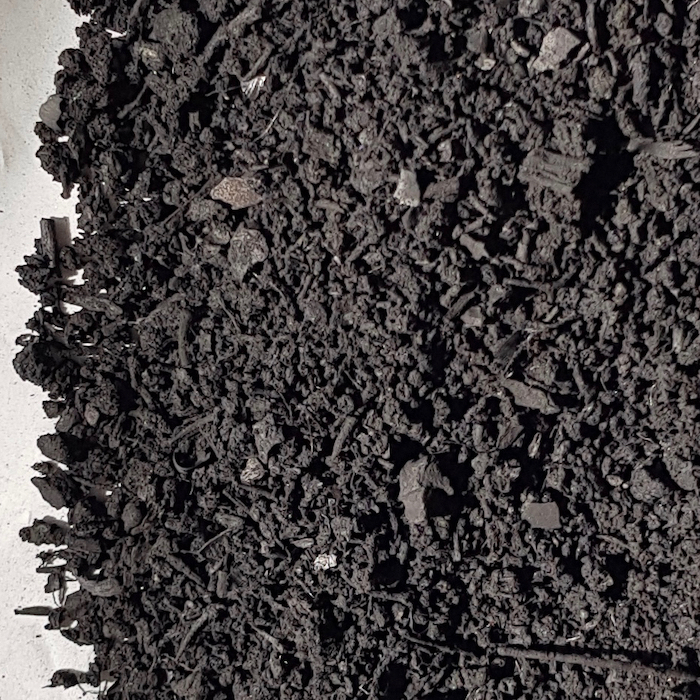
Fertile soil might feel like magic, but it often starts with something as ordinary as a backyard bonfire. Believe it or not, one of the most powerful natural amendments for your garden could be sitting in your brush pile. It’s called biochar—and it’s more than just burned wood. It’s an ancient technique with modern applications that can revitalize your soil, lock nutrients in place, and even help tackle the climate crisis.
Let’s break down what biochar is, how it works, and why your garden (and the planet) might thank you for using it.
What Exactly Is Biochar?
Biochar is a form of charcoal made by burning organic material—like wood or crop waste—in a low-oxygen environment. This controlled burn, known as pyrolysis, prevents the material from turning to ash. Instead, what’s left behind is a carbon-rich substance packed with tiny pores, perfect for hosting beneficial microbes in your soil.
Used intentionally, biochar can transform tired, nutrient-depleted soil into a thriving, fertile foundation for healthy plant growth.
A Practice Rooted in Ancient Wisdom
The concept of biochar isn’t new. In fact, it dates back over 2,000 years to the indigenous cultures of the Amazon rainforest. These communities created terra preta—or “dark earth”—by adding charred biomass and organic waste to their fields. The result? Exceptionally rich soil that remains fertile even centuries later.
Today, scientists are rediscovering biochar’s potential as a sustainable solution for modern agriculture and climate resilience.
Why Biochar is a Game-Changer for Soil Health
Biochar offers a long list of benefits—especially when blended with compost or other organic matter. Here’s how it works its magic:
1. It Supercharges Soil Microbiology
Biochar’s porous structure acts like a five-star hotel for microbes. These tiny organisms move in, multiply, and help break down nutrients in ways plants can easily absorb. This creates a more active, dynamic soil food web that supports stronger, healthier plants.
2. It Retains Moisture and Nutrients
Thanks to its sponge-like texture, biochar holds onto water and nutrients instead of letting them leach away with rain or irrigation. This means less fertilizer runoff, reduced watering needs, and better drought resistance for your garden.
3. It Detoxifies and Balances pH
Biochar can bind to heavy metals, toxins, and excess salts, helping to purify the soil. It also has an alkaline pH, which can help neutralize overly acidic soils (though caution is needed in already alkaline environments).
Good for Your Garden—and the Planet
Beyond boosting your tomatoes, biochar plays a powerful role in carbon sequestration. When plant material decomposes or burns in open air, it releases carbon dioxide. But turning it into biochar and burying it locks that carbon underground—sometimes for hundreds or even thousands of years.
This makes biochar a promising tool in the fight against climate change. Some researchers believe large-scale biochar production and soil application could meaningfully reduce atmospheric carbon levels over time.
Where Does Biochar Come From?
Biochar can be purchased or made at home. Commercial biochar is often produced from sustainably harvested wood waste or agricultural byproducts. Many companies sell it ready-to-use, often pre-inoculated with compost or microbial blends.
But if you’re the DIY type, you can absolutely make your own biochar using fallen branches, yard waste, or even leftover campfire logs. Just avoid pressure-treated wood or anything painted or chemically treated, as those substances can be harmful to soil life.
How to Make Biochar at Home
Creating homemade biochar is surprisingly simple. Here’s a beginner-friendly approach:
Step-by-Step Backyard Biochar
- Dig a shallow trench in the ground or use a burn barrel.
- Add dry brush or wood to the trench and start a fire.
- Once the fire burns hot, let the flames die down until the wood is glowing but not reduced to ash.
- Smother the fire by covering the material with a thin layer of soil or dousing with water. This stops the oxygen supply and halts combustion.
- Let the char cool completely, then crush it into small pieces using a shovel, hammer, or sturdy bucket.
Now you have biochar! But it’s not quite ready for your garden just yet.
Prepping Biochar for the Garden
Fresh biochar can be too “clean”—meaning it lacks the nutrients and microbes plants need. Before adding it to your soil, it’s best to “charge” it by mixing it with compost or soaking it in compost tea for a few weeks. This inoculation process helps fill its pores with nutrients and beneficial bacteria.
Once prepared, biochar becomes an incredible long-term soil amendment that only gets better with time.
How Much Biochar Should You Use?
There’s no one-size-fits-all answer, but most gardeners see good results using about:
- ½ to 1 pound per square foot of garden space
- Blended into the top 4–6 inches of soil
If you’re just starting out, use smaller amounts and build up over time. You’ll notice long-term improvements in soil texture, fertility, and plant vitality.
Pro Tips for Using Biochar
- Smaller is better: Finely crushed biochar has more surface area, which means more room for microbes to grow.
- Mix it with compost: This helps reduce pH imbalances and jumpstarts microbial life.
- Avoid chemically treated wood: Only use clean, natural biomass.
- Test your soil: If your soil is already alkaline, use biochar sparingly to avoid overcorrecting.
- Watch for dust: Crushed biochar can get messy—wear a mask if you’re working with large quantities.
Final Thoughts: Is Biochar Right for Your Garden?
If you’re looking for a sustainable way to feed your soil, retain moisture, and support a healthier planet, biochar is a smart place to start. It’s affordable, effective, and easy to make—and once you’ve seen its benefits in your garden, you may never go back.
So next time you gather around a bonfire, remember: those charred remains might just be the secret to your most abundant harvest yet.
